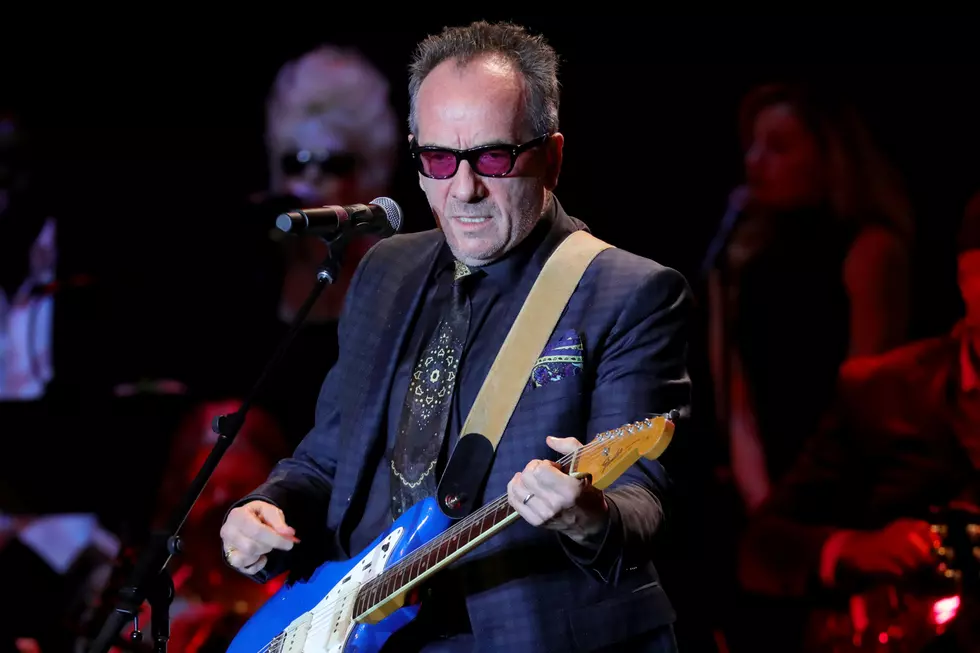35 Years Ago: Elvis Costello Goes Country on ‘Almost Blue’
To begin his recording career, Elvis Costello had made five albums in five years, four of them with the Attractions, each produced by Nick Lowe. He had channeled punk’s unfettered frenzy and integrated R&B energy into his recordings while writing clever songs about artistry, politics and relationships. By the spring of 1981, he needed a break – not from making music, but from singing his own songs.
“I had made five records in quick succession and what was in my heart were songs that were very straight ahead, lyrically,” Costello recalled in 2010. “Most of the songs I liked at that time happened to be country songs. I didn’t see myself so much as a country singer, but as a ballad singer at that moment, a blue ballad singer.”
A couple years prior, Costello had come to Nashville to sing with George Jones on an album of duets. In the process of recording Elvis’s own “Stranger in the House,” the musician met country music legend Billy Sherrill, who had co-written “Stand By Your Man” and produced countless sessions for Jones, Tammy Wynette and Charlie Rich, among others. With the idea of recording a covers album for his next release, Costello got in touch with Sherrill, who agreed to the idea as long as the English rocker brought the Attractions to Music City, U.S.A. They showed up in May, along with a British documentary crew.
“We came in ’81 and cut an album in about nine days,” Costello said. “We cut about 30 tracks – everything from Stonewall Jackson songs to Johnny Cash songs and Gram Parsons tunes, who had been very instrumental in people like myself… I think [Sherrill] was a little bewildered why we wanted to cut all of these old songs, and I think he was also a bit horrified by these kind of pale and trembling young men who would come into the studio in the morning, having stayed up all night doing God knows what.”
The horror went both ways, as Costello often found that Sherrill was less interested in the Attractions revved-up take on Hank Williams’ “Why Don’t You Love Me (Like You Used to Do)?” than comparing guns with studio personnel or talking about his many boats. On the other hand, Billy was more engaged in the project than Costello had feared.
“The engineer said to me that if Billy had really been disinterested in what we were doing he would have listened to the recording session from his office,” Costello said in 1994, “’cause he had an intercom, and sometimes he would mix over the intercom and just make suggestions.”
The end result was an LP of some of Costello’s favorite country records presented in a hybrid of Sherrill’s Nashville sound – with strings, fiddle and background singers – and the Attractions’ nervy musicianship. The band was joined by guitarist/pedal steel player John McFee, who had played on My Aim is True. “It was sort of our version of country music,” Costello said in 2010.
Recorded in May, the album was ready to be released on Oct. 23, 1981, a nine months to the day after Costello and the Attractions’ previous record, Trust. Almost Blue arrived in record stores with a cheeky sticker: “WARNING: This album contains country & western music and may cause offence to narrow minded listeners.”
In the U.S. the covers LP didn’t cause offense as much as indifference. It rose to No. 50 on the Billboard album charts, the lowest slot for any Costello record until 1986. It was a different tale in the U.K., where Almost Blue was propelled into the Top 10 by its almost ghostly single, “A Good Year for the Roses.” Fans and critics seemed to regard the album as an aberration before Costello returned to what he did best, although the music press has grown more generous to the album over time (somewhat aided by reissues that included a wealth of additional material).
Almost Blue was the first musical detour for Costello, who would take turns into various genres throughout his recording career, eventually even returning in the ’00s to country music – and Nashville.
“I think it’s just that it’s a rich musical town,” Costello said. “That’s the truth.”
Elvis Costello Albums Ranked in Order of Awesomeness
More From Diffuser.fm









